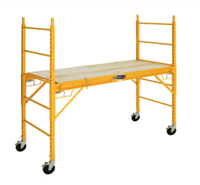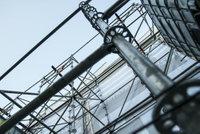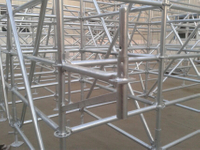Content Menu
● Introduction to Scaffolding Clamps
● Types of Scaffolding Clamps
● Importance of Clamp Inspection
● Types of Inspections
● Maintenance Tips for Scaffolding Clamps
● Proper Storage of Clamps
● Safety Guidelines for Clamp Use
● Scaffolding Inspection Checklist
● Benefits of Regular Clamp Maintenance
● Advanced Techniques for Clamp Maintenance
● Case Studies: Effective Clamp Maintenance in Practice
● Best Practices from Industry Leaders
● Regulatory Compliance and Standards
>> OSHA Guidelines
>> EN Standards
● Conclusion
● FAQ
>> 1. What are the types of inspections required for scaffolding clamps?
>> 2. How often should scaffolding clamps be inspected?
>> 3. What are the key maintenance tips for scaffolding clamps?
>> 4. Why is proper storage important for scaffolding clamps?
>> 5. What safety guidelines should be followed when using clamps for scaffolding?
● Citations:
Maintaining and inspecting clamps for scaffolding is crucial for ensuring the safety and structural integrity of scaffolding systems. Clamps play a vital role in securing various components of scaffolding, such as beams and ledgers, to the main structure. In this article, we will explore the importance of clamp maintenance and inspection, discuss the types of inspections required, and provide tips for maintaining clamps effectively.
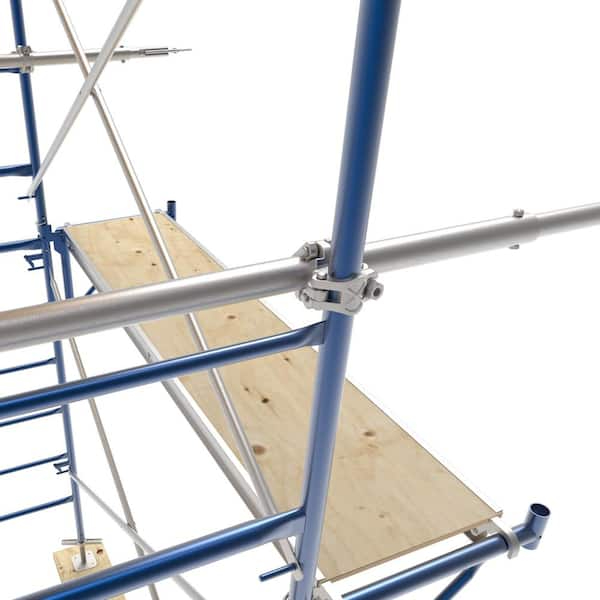
Introduction to Scaffolding Clamps
Scaffolding clamps are designed to connect different parts of the scaffolding system, ensuring stability and support. They come in various types, including fixed, adjustable, and swivel clamps, each suited to different applications.
Types of Scaffolding Clamps
1. Fixed Clamps: These are used for securing components at fixed positions and are commonly used in permanent structures.
2. Adjustable Clamps: These allow for adjustments in positioning and are ideal for projects requiring flexibility.
3. Swivel Clamps: These provide rotational flexibility, allowing components to be positioned at various angles.
Importance of Clamp Inspection
Inspecting clamps regularly is essential to prevent accidents and ensure compliance with safety regulations. A faulty clamp can lead to structural failure, posing significant risks to workers and the surrounding environment.
Types of Inspections
1. Initial Inspections: Conducted before the first use of new clamps to ensure they meet safety standards.
2. Every Lift Inspections: Performed before and after each lift to verify clamp functionality.
3. Frequent Inspections: Conducted at regular intervals (e.g., daily, weekly) to check for wear and damage.
4. Periodic Inspections: Detailed inspections performed at longer intervals (e.g., monthly, annually) to assess overall condition.
Maintenance Tips for Scaffolding Clamps
Maintaining scaffolding clamps involves several key practices:
1. Cleaning: Regularly clean clamps to remove dirt and debris that can affect their operation.
2. Lubrication: Apply lubricant to moving parts to ensure smooth operation and prevent corrosion.
3. Repair and Replacement: Address any damage promptly and replace worn-out parts to maintain safety standards.
4. Storage: Store clamps in a dry, secure location when not in use to prevent damage.
Proper Storage of Clamps
Proper storage is crucial for extending the lifespan of clamps. Ensure they are kept in a dry area, protected from harsh weather conditions and corrosive substances.
Safety Guidelines for Clamp Use
Safety guidelines are essential for preventing accidents when using clamps for scaffolding:
1. Ensure Compatibility: Use clamps compatible with your scaffolding system.
2. Load Capacity: Never exceed the recommended load capacity of clamps.
3. Regular Inspections: Conduct regular inspections to identify any potential issues.
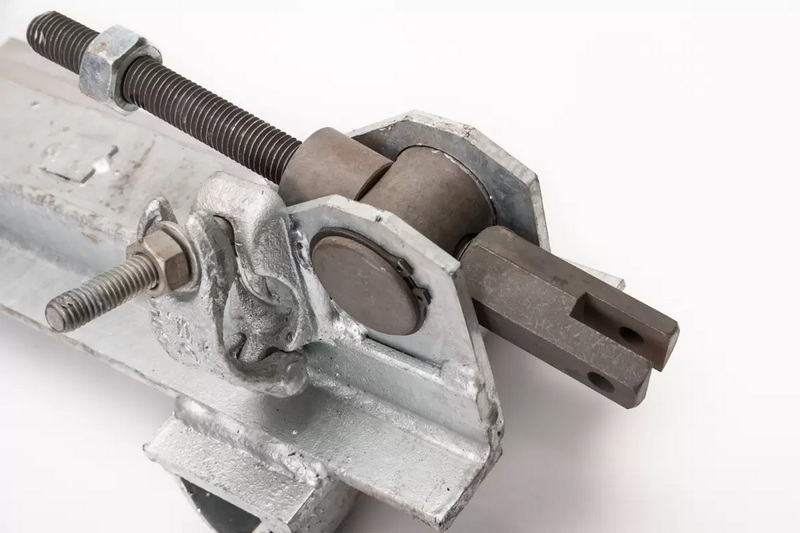
Scaffolding Inspection Checklist
Use a comprehensive checklist to ensure all aspects of scaffolding, including clamps, are inspected thoroughly:
- Guardrails: Ensure all necessary guardrails are in place.
- Clamp Security: Verify that all clamps are securely fastened.
- Base Plates: Check that base plates are firmly in contact with the ground.
- Bracing: Ensure all bracing is properly attached.
Benefits of Regular Clamp Maintenance
Regular maintenance of clamps for scaffolding offers several benefits:
- Enhanced Safety: Reduces the risk of accidents by ensuring all components are in good condition.
- Extended Lifespan: Prolongs the lifespan of clamps and scaffolding components.
- Compliance: Helps in complying with safety regulations and standards.
Advanced Techniques for Clamp Maintenance
In addition to basic maintenance, advanced techniques can further enhance the performance and longevity of clamps:
1. Coating and Painting: Apply protective coatings or paint to prevent corrosion, especially in harsh environments.
2. Regular Calibration: For adjustable clamps, ensure they are calibrated regularly to maintain precision.
3. Training Programs: Implement training programs for workers to ensure they understand proper clamp usage and maintenance.
Case Studies: Effective Clamp Maintenance in Practice
Several construction companies have successfully implemented comprehensive clamp maintenance programs, resulting in improved safety records and reduced downtime. For example, a major construction firm in Europe reported a significant decrease in scaffolding-related accidents after implementing regular inspections and maintenance protocols.
Best Practices from Industry Leaders
Industry leaders emphasize the importance of:
- Documentation: Keeping detailed records of inspections and maintenance activities.
- Standardization: Standardizing maintenance procedures across all projects.
- Continuous Training: Providing ongoing training for workers on clamp maintenance and safety.
Regulatory Compliance and Standards
Ensuring compliance with regulatory standards is crucial for maintaining safe scaffolding operations. Organizations such as OSHA in the United States and the European Union's EN standards provide guidelines for scaffolding safety, including clamp maintenance.
OSHA Guidelines
OSHA requires that scaffolding be capable of supporting its own weight and at least four times the maximum intended load without failure. Regular inspections are mandatory to ensure compliance.
EN Standards
EN standards provide detailed specifications for scaffolding components, including clamps, to ensure they meet safety and performance criteria.
Conclusion
Maintaining and inspecting clamps for scaffolding is a critical aspect of ensuring the safety and efficiency of construction projects. By following the guidelines outlined in this article, you can enhance the reliability of your scaffolding system and prevent potential hazards. Regular inspections and maintenance are key to extending the lifespan of clamps and ensuring compliance with safety standards.
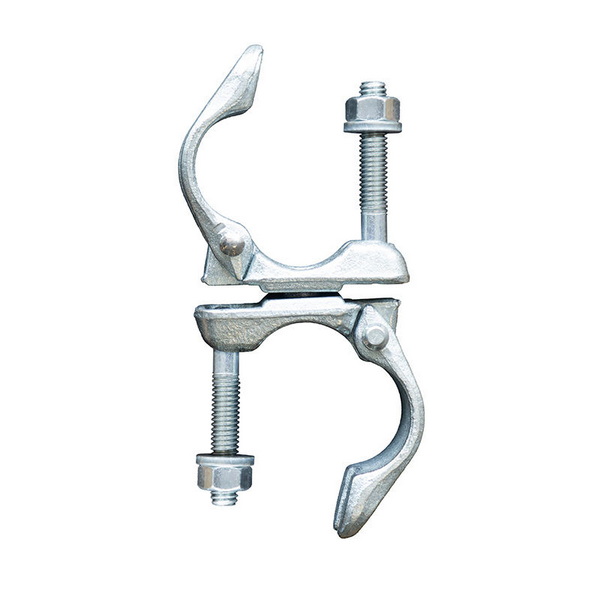
FAQ
1. What are the types of inspections required for scaffolding clamps?
The types of inspections required for scaffolding clamps include initial inspections, every lift inspections, frequent inspections, and periodic inspections.
2. How often should scaffolding clamps be inspected?
Scaffolding clamps should be inspected frequently, such as daily or weekly, with more detailed periodic inspections conducted monthly or annually.
3. What are the key maintenance tips for scaffolding clamps?
Key maintenance tips include regular cleaning, lubrication of moving parts, prompt repair or replacement of damaged parts, and proper storage when not in use.
4. Why is proper storage important for scaffolding clamps?
Proper storage is important to protect clamps from damage, corrosion, and environmental degradation, ensuring they remain in good condition for future use.
5. What safety guidelines should be followed when using clamps for scaffolding?
Safety guidelines include ensuring compatibility with the scaffolding system, not exceeding load capacity, and conducting regular inspections to identify potential issues.
Citations:
[1] https://www.axiosindustrial.com/blogs/scaffolding-maintenance-guide-extend-the-life-of-your-scaffolds
[2] https://www.caldwellinc.com/how-to-perform-a-clamp-inspection-per-asme-b30-20
[3] https://ehs.okstate.edu/site-files/documents/scaffolding_checklist.pdf
[4] https://www.tp-scaffold.com/how-to-properly-maintain-and-inspect-system-scaffolding-components.html
[5] https://www.youtube.com/watch?v=mIVJMHZjGR8
[6] https://sinc.business/tools/diy-safety-system/scaffolding-inspection-checklist-template/
[7] https://scaffoldingrentalandsales.com/blog/scaffold-maintenance-tips-and-tricks-for-safe-and-efficient-operations/
[8] https://brandsafway.com/uploads/files/orn402_bsl_tube_and_clamp_safety_guidelines.pdf













